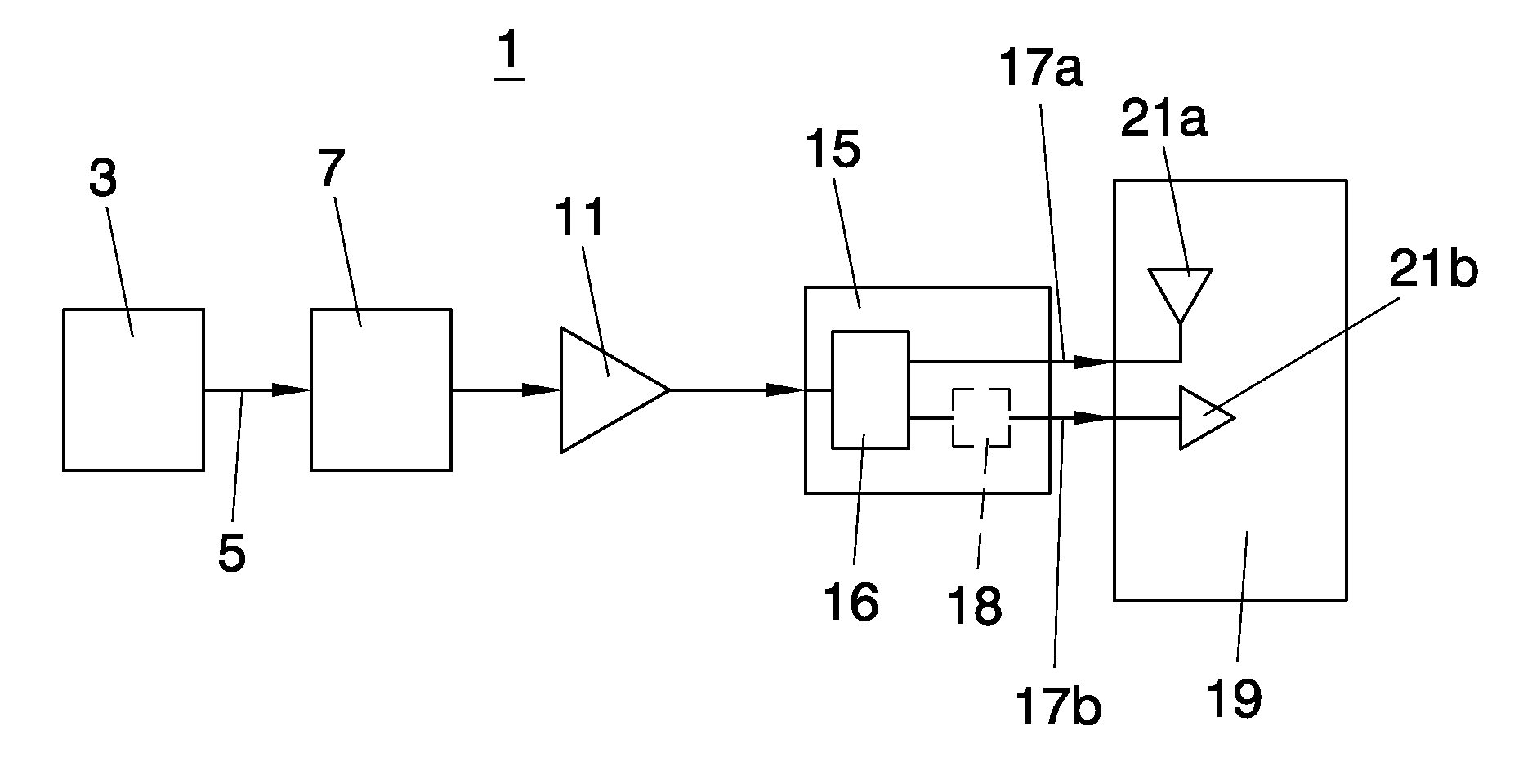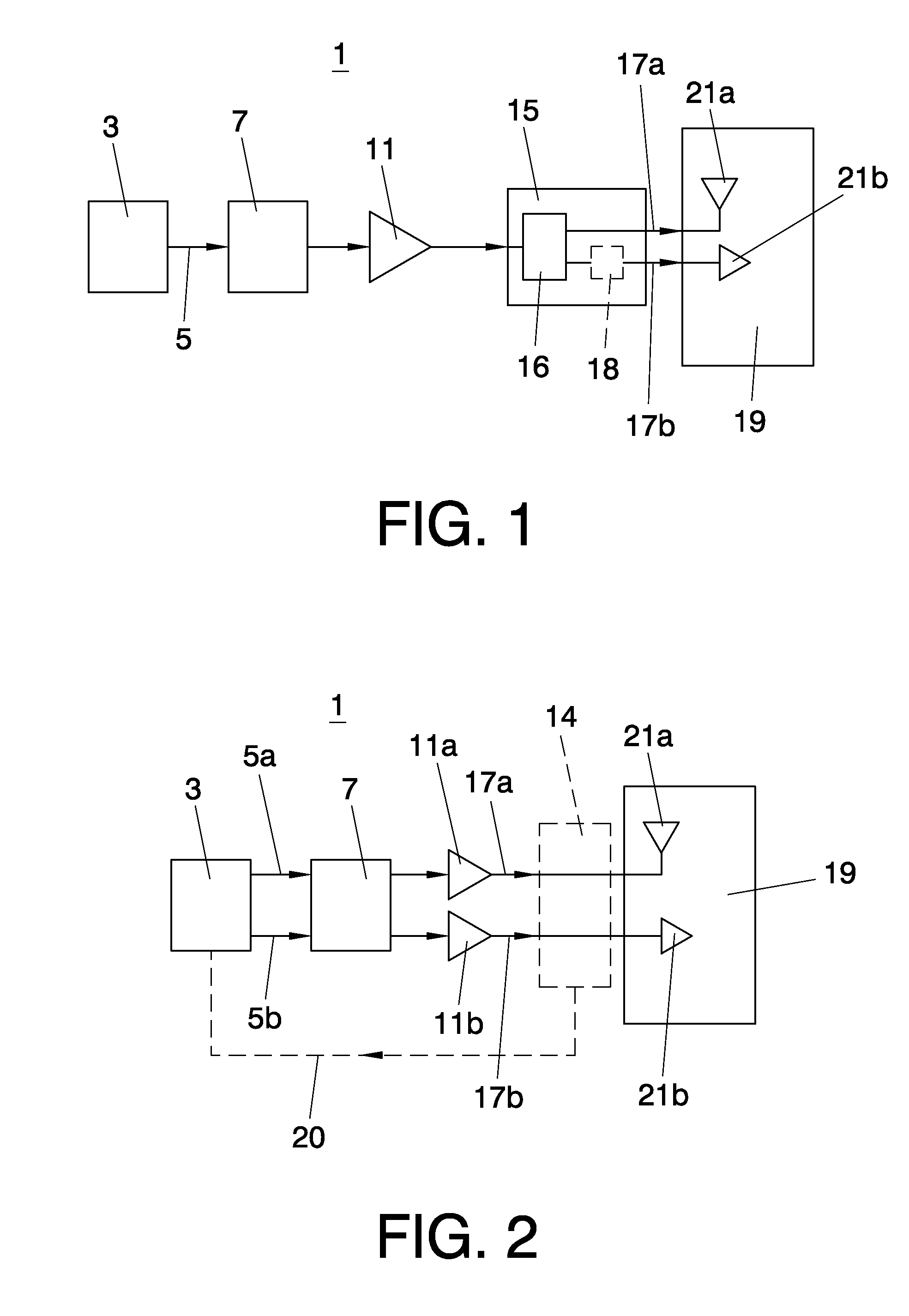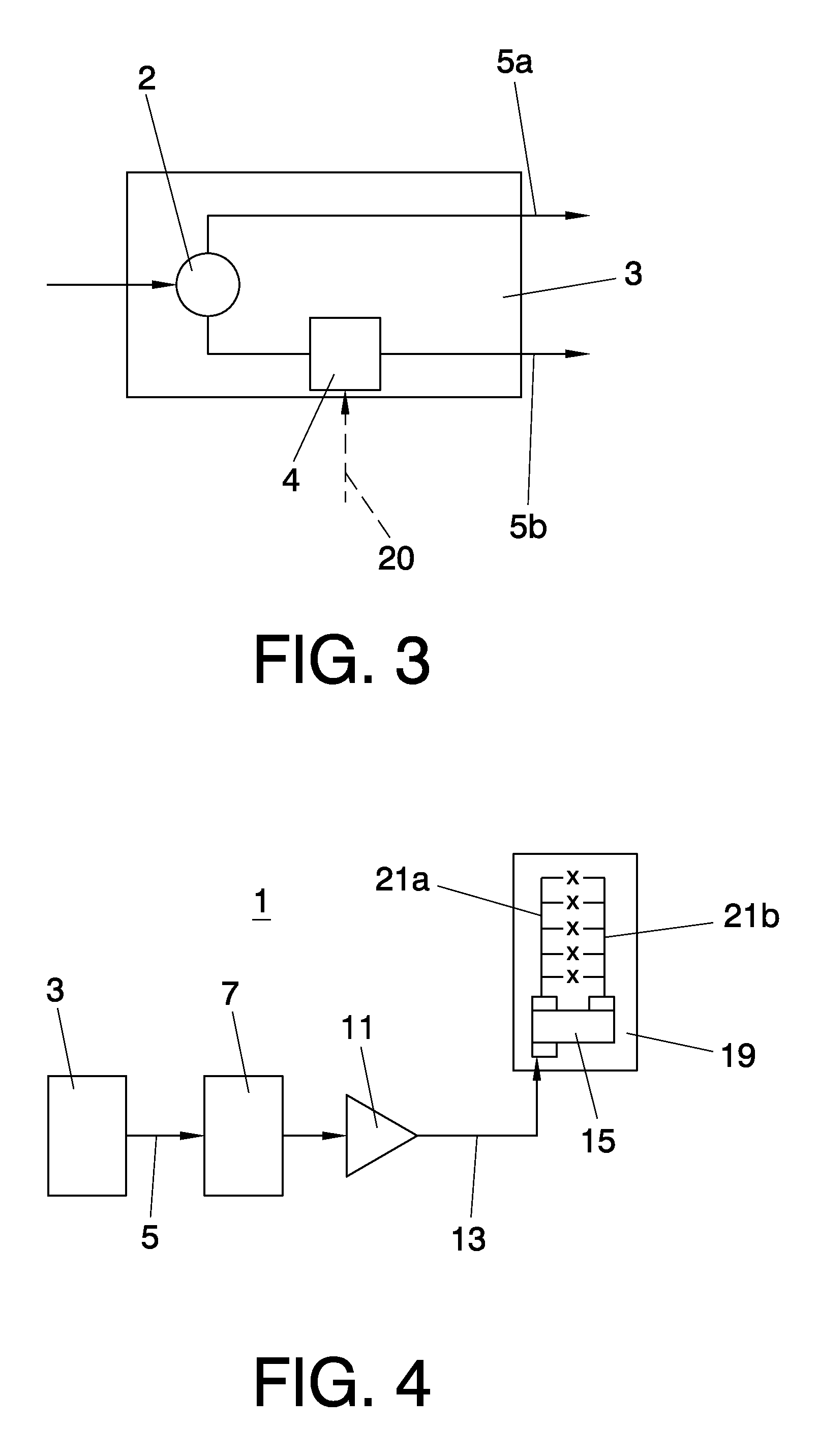Transmitting a Radio Signal in a Mobile Communication Network
a radio signal and mobile communication technology, applied in the direction of electromagnetic wave modulation, polarised antenna unit combination, modulation, etc., can solve the problems of inability to achieve optimal rx diversity under all circumstances, and inability to achieve diversity optimal performance, etc., to achieve the effect of reducing the sensitivity to cross-polarization fading, improving the reception quality of signals of mobile terminals without diversity
- Summary
- Abstract
- Description
- Claims
- Application Information
AI Technical Summary
Benefits of technology
Problems solved by technology
Method used
Image
Examples
first embodiment
[0037] the transmission means 1 comprise base band processing means 3 providing a base band signal 5. The base band signal 5 is up-converted to a radio frequency by frequency conversion means 7 and amplified by power amplifier 11, thereby obtaining radio signal 13. Radio signal 13 is split by power divider and phase shifting means 15 into the first version of the radio signal 17a and the second version of the radio signal 17b. The power divider and phase shifting means 15 may consist of any passive or active component or combinations of passive or active components that splits an input signal equally between both outputs but with a phase shift of 90 degrees between both output branches. However, the power divider and phase shift means preferably comprises a 90° hybrid combiner 16. This commercially available component comprises two inputs and two outputs and splits the input signal at each input between both outputs with a phase shift of 90 degrees between the output branches. This ...
second embodiment
[0040] the signal is already split at base band level by the base band processing means 3, into a first version of the base band signal 5a and a second version of the base band signal 5b. The first version of the base band signal 5a and the second version of the base band signal component 5b contain the same information, have 90° phase difference between them and have equal power. This is shown in more detail in FIG. 3. The base band processing means 3 comprises a base band signal divider 2 for dividing the input signal and a 90° phase shifter 4 for generating the required 90° phase difference. Alternatively, the phase shifter 4 is a variable phase shifter. In this case, a phase shift detector 14 is needed that detects the phase shift between the first version and the second version of the radio signal and provides the variable phase shifter with phase correction information 20, i.e. the deviation of the detected phase shift from 90°. The variable phase shifter is configured to adap...
third embodiment
[0043] shown in FIG. 3, the power divider and phase shift means 15 is inserted in the body of an existing cross polar antenna arrangement 19, wherein the first antenna element 21a and the second antenna element 21b are antenna arrays. In this case, there are no constraints regarding the feeder length between the power divider and phase shift means outputs and the antenna ports inputs because the power divider and phase shift means outputs are directly connected to the antenna elements feeder network.
[0044]The use of the system according to the present invention has proven to be very advantageous for High Speed Downlink Packet Access (HSDPA) bearers. The improvement in the received signal quality of the HSDPA bearer at a HSPA mobile terminal results in a better channel estimation. So, Block Error Rate (BLER) values are lower and the average value of the Channel Quality Indicator (CQI) reported by the mobile terminal increases.
[0045]This is illustrated in FIG. 5, which shows the distr...
PUM
 Login to View More
Login to View More Abstract
Description
Claims
Application Information
 Login to View More
Login to View More - R&D
- Intellectual Property
- Life Sciences
- Materials
- Tech Scout
- Unparalleled Data Quality
- Higher Quality Content
- 60% Fewer Hallucinations
Browse by: Latest US Patents, China's latest patents, Technical Efficacy Thesaurus, Application Domain, Technology Topic, Popular Technical Reports.
© 2025 PatSnap. All rights reserved.Legal|Privacy policy|Modern Slavery Act Transparency Statement|Sitemap|About US| Contact US: help@patsnap.com



